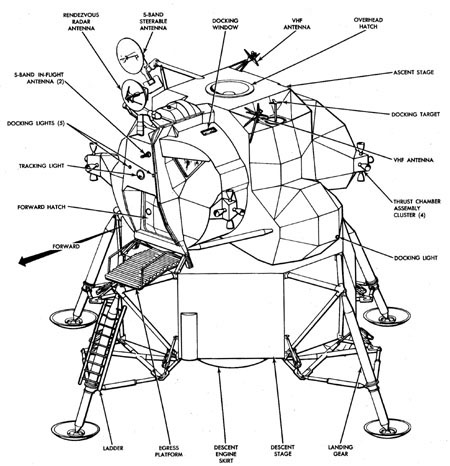The hiss of the airlock as the door opened, the excited chatter over the radio transmissions as the entirety of Earth watched: this was humanity’s first step into the future of space travel. Apollo 11, one of the most influential missions in American history, landed humans on the moon and blazed a path for space-based innovations. Over the years, the source code for this amazing project has been made public—revealing the masterful techniques that engineers used to make this mission possible.
The Apollo 11 software was split into two parts: the Comanche, responsible for both controlling the craft and housing the astronauts, and the Luminary, which carried Buzz Aldrin and Neil Armstrong on the moon’s surface and back to the Comanche. Interestingly, everything is written in pure assembly language—or the lowest level, most skeletonic computer language you can write before you hit plain ones and zeros. The code for Apollo 11 used this language to interface with the spacecraft’s external machines. Hardware such as the ignition thrusters relied on this code to effectively communicate with the Apollo 11 team back on Earth.

The operations for these two parts of Apollo 11 were split into multiple simplified functions. The fascinating code “READGYMB”, for example, was used to read data in order to maintain stabilization. Our personal favorite example, “BURN_BABY_BURN–MASTER_IGNITION_ROUTINE” was used to remotely control the main ignition and launch the rocket into space. Evidently, these engineers did not spare any humor when naming these files. The aforementioned name, in fact, originates from L.A. radio jockey ‘Magnificent’ Montague’s famous catchphrase—a fitting name for such a magnificent piece of technology. If you want to learn more, you can find everything online (it’s all publicly available)!
These genius engineers behind Apollo 11 also created an external interface called the Display Keyboard, or DSKY, for communicating and controlling the lander module. This sophisticated system, installed on the Comanche and Luminary, was crucial for enabling control of and communications with the lunar module. Equipped with many buttons and separate displays, the DSKY provided astronauts and engineers with vital information and easy access to input commands for safely navigating and operating the spacecraft.
What made the DSKY truly remarkable was that its firmware was entirely written in AGC, the language specific to the Apollo Guidance Computer. To the historic Apollo 11 mission, the DSKY became more than a simple control panel: it was an ingenious piece of technology that served as the primary method for remote guidance and control.

The brain behind the lander, the CPU, was also incredibly complex. The computer systems of the craft were one of the first examples of machinery utilizing integrated circuits, which are electronic boards composed of a few base components. Although they use significantly more electricity, these novel circuits vastly outperformed the original core transistors—carrying out more calculations while taking up less space. Beyond giving Apollo 11 the upgrade it needed to succeed, this innovation paved the way for many modern pieces of computer hardware.
This important part of science history is a treasure trove of knowledge—storing revolutionary software and hardware that made controlling Apollo 11 both remotely and on the moon possible. All these new inventions and fields of science culminated in the premier endeavor of the 20th century, launching us toward humanity’s cosmic future.

